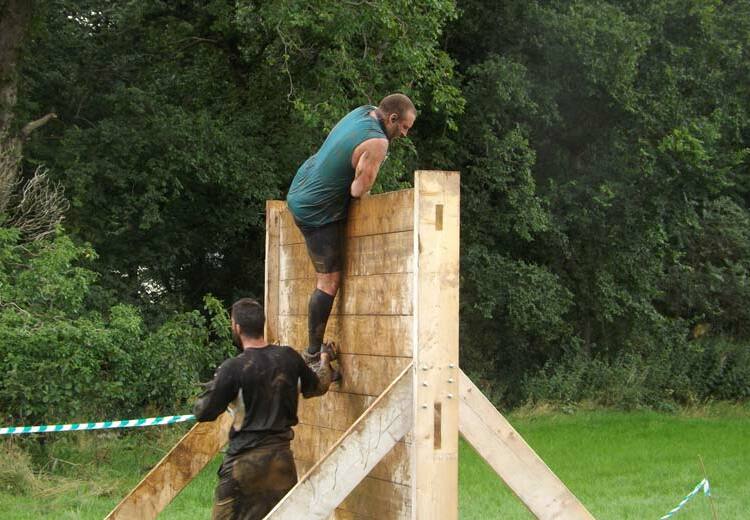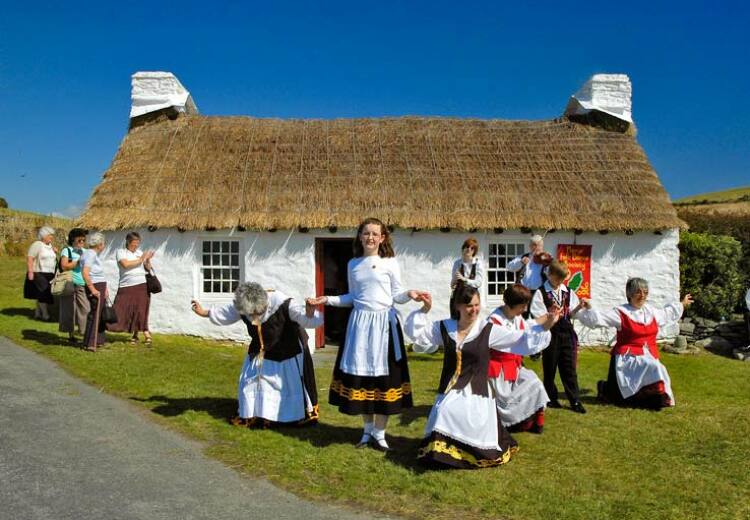Christmas is one of the most eagerly anticipated times of the year and, for many, is a time for parties, high spirits and excessive consumption of goodies. Unfortunately, it’s also a time when a significant number of accidents and ailments occur within the home.
Each year around 80,000 people will go to hospital over the festive holiday period with children under the age of five and people over 65 being the most likely to have an accident in the home.
Putting up decorations, wrapping presents, playing with new gadgets and carving the turkey can all turn a joyous occasion into a wretched affair with injuries and conditions ranging from cuts through to heart attacks.
St John Ambulance, the nation’s leading first aid charity, believes that anyone who needs first aid should get it. But the fact is that’s not happening. St John Ambulance is determined to be the difference between lives lost and lives saved. Here, the charity has provided first aid advice for a number of common festive injuries.
Wounds and bleeding
The frenzied removal of difficult wrapping on presents with a sharp knife, or problems mastering the perfect technique of carving the Christmas turkey are just a couple of examples where it can all go horribly wrong. Small cuts and grazes usually only need cleaning and bandaging and will heal by themselves in a few days. It’s important to ensure that the wound is clean by using an alcohol-free wipe or running the wound under the tap, followed by the application of a self adhesive plaster or sterile gauze. If the cut is deep remove or cut any clothing away from the wound. Place a sterile wound dressing or non-fluffy pad over the wound. Apply firm pressure with your fingers or the palm of your hand. Maintaining pressure on the wound, raise and support the injured part so that it is above the level of the casualty’s heart. Keeping the injury high, help the casualty to lie down. Raise and support their legs to minimise the risk of shock. Secure a pad over the wound with a bandage. Check the circulation beyond the bandage every 10 minutes. Loosen and reapply the bandage if necessary.
Burns
Burns from contending with splattering hot oil and pans of boiling water in preparation of the Christmas feast are common. Minor burns can be treated at home effectively, but if you suspect the injury is severe it’s vital to advise the injured person to see a doctor. Make the casualty comfortable by helping him to sit or lie down. Flood the injury with cold water; cool for at least 10 minutes or until pain is relieved. While you are cooling the burn, carefully remove any clothing or jewellery from the area before it starts to swell. Do not remove anything that is sticking to the burn. Cover the burn with kitchen film or a plastic bag. Alternatively, use a sterile dressing or a non-fluffy pad. Monitor and record the casualty’s level of response, breathing and pulse while waiting for help to arrive.
Heart attack or indigestion?
Overindulgence on food at Christmas is common and, as a result, so is indigestion and heartburn. Symptoms can be similar to that of a heart attack so it’s important to establish the type of discomfort being experienced. The key symptoms of a heart attack are tightness in the chest and pain that spreads out from the chest to the arms or jaw. Sweating and shortness of breath is also common. If you suspect someone is having a heart attack, prompt action is vital. Call 999 immediately and, if the person is conscious, give them a single aspirin tablet to chew (300mg) unless you know they are allergic to it.
Strains, sprains and breaks
New toys and gadgets where participants mimic the movements of an activity or sport in the comfort of their home are potential hazards during the Christmas period. Hours spent playing with new equipment can result in pain from injured joints, back, shoulder or ankle. Other causes of sprains and breaks can include tripping over discarded Christmas packaging, slipping on greasy kitchen floors or on frost in the garden. Fractures need to go to hospital, but beforehand, you should make sure the injured person is kept still and the break supported with your hands or by being bandaged (in a sling if an upper limb break, or bandaged to the uninjured leg, if a lower limb break).
In the case of a sprain it can be treated using the RICE procedure (Rest, Ice, make Comfortable and Elevation). The injured part should be rested and supported and, if a recent injury, an ice pack should be applied to reduce swelling, make sure that the ice does not come into direct contact with the skin. Apply a comfortable support to the injured part with soft padding held in place with a support bandage, finally support the limb ion a raised position to help minimise bruising.
Nosebleeds
Nosebleeds are common among children during times of excitement, but adults may be equally susceptible. There can be different reasons for nosebleeds. It could be the result of a knock to the nose, blowing or picking the nose or in adults it could also be a symptom of high blood pressure. The casualty should be made to sit quietly, pinch the soft part of the nose and tilt his or her head forwards while breathing through the mouth. After approximately ten minutes he can let go of the nose to see if the bleeding has stopped. If not, resume the pinching of the nose, this can be done a maximum of three times (30 minutes), if still bleeding, or if the bleeding is severe, seek medical advice. Once the bleeding has stopped, the casualty should be advised to rest quietly, avoid too much movement or exertion and not touch his nose. If the bleeding is from a head injury, the blood could appear thin and watery. If this is the case, the casualty should be taken to hospital because it could indicate a skull fracture leaking fluid from the brain.
Choking
Settling around the table for Christmas lunch with the whole family, there’s always the risk of someone choking on their food. Whether it’s an adult or child, it’s important to ask them if they are choking and always encourage them to cough. If they are unable to speak, cough or breathe, carry out the following instructions.
Adults and children (1 year to puberty): if the obstruction is severe, give five sharp blows to the back by supporting her chest with one hand while getting her to lean forwards. Check the mouth for any obvious obstruction and remove. If this doesn’t work, give up to five abdominal thrusts by standing behind the casualty, while ensuring she remains leaning forwards, and putting both arms around the upper part of her abdomen. Clench your fist and place it between the navel and the bottom of the breastbone. Hold onto your fist with your other hand and pull sharply inwards and upwards up to five times. Check the mouth again. If, after repeating three cycles of back blows and abdominal thrusts, the obstruction does not clear, dial 999 for an ambulance and continue until it arrives.
Infants (under 1 year): if the infant is unable to breathe, cry or cough, lay him face down along your forearm with the head low but supported and give up to five back blows with the heel of your hand. If this fails to clear the obstruction, turn the baby onto his back and proceed with five chest thrusts. To do this, use two fingers to push upwards and outwards against the infant’s breastbone (one finger’s width below the nipple line). If the obstruction is not clear, repeat the back blows and chest thrusts. Call 999 if the obstruction still has not cleared.
Electric shocks
Electric shocks in the home are usually associated with domestic appliances but are therefore low-voltage and unlikely to be fatal. At Christmas this could quite often be linked with putting up faulty fairy lights. It’s important to separate the casualty from the faulty appliance (either switching the mains off or removing the plug). If, for any reason, you’re unable to do this, you must protect yourself by standing on a telephone directory, wooden box or rubber mat. Using something wooden, such as a broom handle, push the electrical source away from the casualty or vice versa. Should the casualty stop breathing, call 999 and be prepared to give chest compressions and rescue breaths until the ambulance arrives. If the casualty is still breathing, it may be necessary to treat them for shock: raise and support the casualty’s legs to improve circulation to the vital organs, loosen tight clothing at the chest, neck and waist, and keep the casualty warm.
First aid advice can be downloaded by members of the public via St John Ambulance’s iPhone application available from iTunes and would make a great Christmas gift. For details of first aid courses in your area visit www.sja.org.uk or call Phil Bennett, Commercial Development Officer, St John Ambulance Isle of Man, on 01624 674387 or email: marketing@sja.org.im.








